– Announcer: The following program is a PBS Wisconsin Original Production.
– Angela: Coming up on Wisconsin Life: [shimmery music] we meet an observatory director looking to the sky, the star of a beloved Bingo show, a musician preserving Hmong history, and a pair of entrepreneurs offering up fun… gi.
That’s all ahead on Wisconsin Life.
[uplifting guitars, strings, piano, and drums] – Announcer: Funding for Wisconsin Life is provided by the Wooden Nickel Fund, Mary and Lowell Peterson, the A.C.V.
and Mary Elston Family, the Obrodovich Family Foundation, the Stanley J. Cottrill Fund, Alliant Energy, UW Health, donors to the Focus Fund for Wisconsin Programs, and Friends of PBS Wisconsin.
[light airy music, singer vocalizing] – You all sound amazing.
Thank you so much.
And welcome to Wisconsin Life.
I’m your host, Angela Fitzgerald.
We’re on a mission to discover a place where science and art collide by joining the Blackbird Creative Lab as they take over Yerkes Observatory.
The observatory in Williams Bay continues to play an important role in astronomy, but for two weeks, it transforms into a constellation of musical creativity.
[lively music] Grammy Award-winning ensemble “Eighth Blackbird” welcomes a cohort of musical ensembles and composers for an immersive creative experience.
During their time here, musicians receive mentorship, collaborate, and experiment, all while composing new musical arrangements inspired and created for this historic space.
Before we get back to the music, let’s narrow our lens and learn more about the largest refracting telescope in the world, found right here.
And focus in on the deputy director at Yerkes Observatory, working to revitalize this space through science and art.
– Dr. Amanda Bauer: I wanna go to space, I wanna break free Amanda: You ready?
– Angela: With a song in her heart and stars in her eyes, Dr. Amanda Bauer is ready to show off Yerkes Observatory.
– Amanda: It’s known for having the world’s largest refracting telescope.
There we go.
1897 is when it first opened its eye on the skies.
The dome moves around 360 degrees to allow for the telescope to be able to point in any direction.
[bright music] It really innovated the way that astronomy was done.
It was the last big refractor built because, when you see it, you see how mechanically amazing and huge-scale it is.
[bright music] – Angela: The entire observatory floor, at 90 feet wide, serves as a giant elevator, the largest in Wisconsin, lifting astronomers up to the great refractor telescope and into the heavens.
[dramatic music] – Amanda: There’s a magic to it in using it.
It’s so hands-on.
That just takes you to a different space.
[bright music] [upbeat music] – Angela: As the new deputy director, one of Amanda’s first jobs: to make sure the telescopes still function.
– They hadn’t been used in five years, and I hadn’t used a refracting telescope in a while, so just kind of getting my hands in there and seeing if it worked.
Okay, looks good.
You know when you wake up, and you’re like, [imitates stretching], and you creak?
That’s what the telescope was doing.
[telescope creaking] It was pretty spectacular.
It was like understanding the magic that people have been seeing for generations.
[warm, mid-tempo Electronica] – Angela: Amanda also provides this stargazing station a first.
– Amanda: I’m the first woman in 125 years who has been the head of science here, in this observatory.
[upbeat motivational tones] – Angela: She hopes to expand her own horizons with further research.
– My area of expertise is galaxy evolution.
[bright, upbeat music] – Angela: Amanda joins a long list of famous astronomers who peered into the galaxy with this exact telescope.
[jazz music] – Amanda: Edwin Hubble is absolutely one of the most famous names that people have heard.
The next big telescope that NASA is going to launch is named the Nancy Grace Roman Telescope, because she went from Yerkes to become the very first chief of astronomy at NASA.
Carl Sagan was one of my first idol astronomers.
This observatory is so historic, so many people have come through here.
[lively music] – Angela: One legacy those astronomers left behind is a massive collection of images from our galaxy and beyond.
[gears rasping] – Amanda: We have 180,000 glass plates that capture these images of the cosmos over the last 125 years, and that’s useful in research today.
The glass plates that are here are spectacular.
This is Comet Morehouse.
It was discovered by a student who was here in 1908.
What we’re doing is reinvigorating that research program, bringing it back after kind of a dormant couple of decades, because it does have opportunities to use these telescopes to train the next generation of students.
[bright classical music] – Angela: Yerkes Observatory also pioneered a historic discovery.
– The shape of the Milky Way galaxy is spiral arms, and they determined that here.
[bright classical music] – Angela: Despite the scientific history here, its future was up in the air.
Over the years, the observatory had fallen into disrepair.
– Amanda: No one knew what was gonna happen to this building, and the glass plate collection, and the telescopes.
How can we resurrect and reimagine what this observatory can do?
– Angela: In 2020, the Yerkes Future Foundation bought the observatory from the University of Chicago.
[bright jazz music] – Amanda: The modern-day purpose of this observatory is really bringing research, art, culture, a cross-disciplinary approach to big ideas.
So, tying that art and science together in every facet of what we do is pretty fun, it’s pretty unique.
[giggling] You can come here and get a sense of the magnitude of what was undertaken and the types of discoveries that were made over the last 125 years.
You get to see the biggest refracting telescope in the world, you get to hear these stories come alive about what has happened in this building.
– Angela: And… you might just encounter a ukulele-playing astronomer who reached for the stars.
– Amanda: I wanna go to space, I wanna float free Help me escape the force of gravity [Amanda giggling] [shimmery music] – Angela: Next up, we join an artist in Madison who’s found their calling to educate and entertain.
[gentle upbeat music] [cat rumbles with full-body purr] Brandon Rounds is a cat dad… [cat’s purr buzzes loudly, Siamese cat meows] …an artist, and ambassador.
– Brandon Rounds: Originally from Boscobel, southwest Wisconsin.
If you hold up your hand, down here is where I’m from.
[Brandon chuckles] The goal is to be done by five.
Show’s at six.
[fan flutters] [funk music] [funk music] [zipper rasps] I had to move to realize what was outside of a small town.
– Angela: Outside of his rural upbringing, Brandon found a new circle of friends, and the spotlight.
[claps hands] The end.
– Bam!
You guys got the good makeup tonight.
– Angela: Brandon is also known as the drag artist Bianca Lynn Breeze.
– Emcee: Madison, make some noise for Bianca Lynn Breeze.
[audience cheering] – Brandon: When people come to a drag queen Bingo, they expect the high glamour, and they wanna see something that’s just over the top.
[upbeat music] [“I Wanna Dance with Somebody (Who Loves Me)” Whitney Houston] And when the night falls – I want people to understand that drag is nothing but an art form.
You remember when you’re a kid, and you always played Bingo in school or maybe at your church?
It’s like that excitement but amplified by like a hundred.
All right, here we go.
First number: I-16.
[“Sixteen Going on Seventeen”] I am 16 – Crowd: Going on 17 – Brandon: Drag queen Bingo is just super fun.
– Angela: Bianca entertains sold-out crowds in venue after venue, greeting Bingo fans with humor and humility.
– My humor comes from sarcasm.
Is that rule okay with you guys?
[audience laughing] And everyday life happenings to me.
But also, I’m a dude wearing heels.
I’ve been doing it for 12 years.
I still can’t even walk on heels sometimes.
[lively techno music] – Angela: Brandon uses his small-town experience as a catalyst for change, in high heels and a wig.
[elevator chimes] – Brandon: A lot of my events and a lot of my Bingos tend to be in the smaller communities just outside of Madison.
Hello, Oshkosh, make some noise!
[cheering] After a while, I started to realize that the reason why I’m doing drag is to help educate our communities.
When we’re in drag, and there’s all this glamour, people are gonna notice you, and they’re gonna stop, and they’re gonna listen to what you have to say.
And that’s what’s beautiful about drag.
[techno] – Angela: That approach could be even more important, as drag performers find themselves in the political crosshairs.
– Brandon: We have so much hatred against the LGBTQ community, against drag queens in general, and I want to be that resource for people, to answer questions for them if they have questions.
[gentle music] Bianca’s personality is somebody that anybody can come up to her and ask her anything.
I don’t care; I’m an open book.
Bingo going once, [crowd claps once] Bingo going twice, [crowd claps twice] Bingo going three times.
[crowd claps three times] – Angela: For some people, Bingo is that ‘aha’ moment.
– Brandon: A lot of people don’t know what drag is or have never met a drag queen in their life.
How many of y’all played Bingo here before with us?
[audience yells “Whoo!”]
– And then, after an event, people are like, “You know, I had so much fun tonight.
Thank you for opening my eyes.”
I can’t even count the amount of times I’ve had people say that to me.
Make some noise for our winner.
[audience cheering] – Brandon: We need to continue to be happy, show people what happiness is, what love is, what kindness is.
– Angela: Kindness is a trait Brandon learned from his mother, growing up in that small town.
– I lost my mom in 2008, 15 years ago.
She was always an uplifting person in our community.
Since then, I’ve just feel like I have to be a positive person.
I have to be uplifting because you never know when your last day is gonna come around.
– Angela: Inspired by his mother, Brandon took her name as part of his drag persona.
– And I said, “Well, I don’t wanna be just Bianca.
“I wanna be Bianca Lynn ’cause that was my mom’s middle name.”
– Angela: That tribute brought Brandon closer to his mom, and a drag identity that taught him something else.
– Brandon: When I was younger, I was very reserved.
Bianca instills a little bit of confidence in Brandon.
Bianca is somebody that people come to see, and all of the attention is on her, and she gets to buy all the flashy costuming.
And she gets to do the fun makeup and the glitter and the sparkle.
You’ll have to come in further because there’s more stuff.
I’m just waiting for these shelves just to break.
[lively music] Brandon’s a little bit more professional in life, but Bianca’s taught Brandon to do that because Bianca makes some money, so Brandon has to be able to know how to spend that wisely.
[lively music] – Angela: Brandon has also transformed Bianca into one of Wisconsin’s premier drag Bingo entertainers.
– Literally, glitter, rhinestones, and a wig.
[laughs] We’re all trying to get through this thing that we call life, to find joy and passion in what we do.
It’s made me feel like I’ve really found a place to express who I am.
[smooth Electronica] [shimmery music] – I am at Yerkes Observatory, joining the Blackbird Creative Lab, who are bringing music into focus at this cosmic site.
[guitar swing music] I caught up with the directors of the lab, who are also founding members of the music group “Eighth Blackbird” to learn more.
– Lisa Kaplan: We really started talking about how can we bring together the pieces of all these different programs we’ve ourselves attended, to make our own program?
In 2017, we founded the Blackbird Creative Lab.
– Matthew Duvall: We look back at our struggles, the mistakes that we made, and the things that took us too long to learn.
We wanted to create a space that serves that demographic of emerging professionals.
– Angela: Wow, that’s quite a journey, from you all as musicians now creating a space for other artists to engage with.
– Lisa: It’s a very intense program, and it’s designed to be that way.
We really wanted to develop the curriculum to what the cohort’s needs were.
– And they’re not asking about, “How do I compose music or how do I play my instrument?”
They’re saying, “How do I manage my finances?
How do I read a contract?”
And this program is very intentionally geared toward the whole human of the emerging artist, not just performance.
And even this place, the Yerkes Observatory, is a teaching vehicle.
This is an extraordinarily unique concert hall.
– Lisa: I mean, it’s not even a concert hall.
[Lisa and Angela laughing] – Exactly.
– And so, managing sound in an observatory is quite different.
– But I think too that our partnership with Yerkes has been so beautiful.
We are not creating work that’s in the science field, which is what Yerkes is known for, but we hope that we’re bringing in folks who are incredibly innovative in art.
[bright music] – Angela: Folks like composer Julia Moss and the group “Sputter Box” are cohorts of this year’s program.
– Julia Moss: So I’m writing a piece called “Growing Pains.”
It’s about the mourning process of sort of growing and splitting off from old parts of yourself and how that can be nostalgic and scary and hard but also a positive thing for moving forward.
– That is interesting and relatable.
[laughs] – Yes.
[laughs] – So, what is it like creating in this specific space?
– We’ve really had an open and vulnerable process here.
I really think that this piece couldn’t have been what it was if it wasn’t in this space, together and also at the Yerkes Observatory it’s so resonant and beautiful.
– Angela: From composition– – How about we start from letter J– – Angela: To practice… [playing mallets] …to performance.
[ethereal music, singing indistinctly] The Blackbird Creative Lab offers emerging musicians an out-of-this-world space to create and play.
[bright music] [shimmery music] We now go to Milwaukee, where a musician tells stories through his instrument while preserving the past.
[lively music] [Mason sings in Hmong] – Mason Lospeej Her: I would say being connected to your identity gives you purpose, value, and a reason why, especially when I was in college.
I’m in my last year of my master’s program studying clinical rehabilitation counseling.
As a young Hmong American male, I’ve used this instrument to help me navigate my experiences, as well as preserve our culture.
The only thing that I could use as an outlet to explore my identity or remind me of my identity was my instrument, the qeej.
[playing qeej] – My name is Mason Lospeej Her, and I play the traditional Hmong instrument, qeej.
[playing qeej] The qeej is a woodwind instrument that is made out of bamboo, wood, tree bark, and alloy reeds.
[playing qeej] The instrument is typically played at weddings, funerals, and at Hmong New Year’s for entertainment purposes.
[playing qeej] So, when we play the instrument, it does mimic the Hmong language.
[playing qeej, ringing cymbals on shirt] It can basically share our Hmong story.
[gentle music] From our culture back then, as a displaced group of people, we didn’t have a written language.
We weren’t able to communicate or write down our history.
It was a lot of oral history.
So, one of the ways that we’ve been able to preserve that is through qeej song.
So, I’ve been able to preserve those stories and also pass them down.
[playing qeej] So, I was introduced to the instrument when I was eight years old.
Initially, it was my mother who wanted me to learn an instrument.
Then, my father wanted to come in and teach us.
There are a lot of aspects to the instrument, so I am still learning myself, but we have created a relationship to now create stories together, and share our stories as a father and son, as well as a student and a teacher.
[playing qeej] My favorite part about playing an instrument would be the therapeutic effects that I get from the instrument.
So, when I play the instrument, I do have to focus on breathing, in a sense of mindfulness breathing, as well as, again, being able to tell my story as a first-generation college student.
When I felt that I was alone, away from family, I could play the instrument and feel that I belonged or it was something that I was good at.
I’ve definitely created a different relationship with the instrument, rather than just using it for cultural purposes.
[playing qeej] The qeej is important because it is something unique to the Hmong people.
[playing qeej, shaking cymbals on shirt] You get to understand what your history is and why you are pursuing to be the person you want to be.
It speaks to the importance of how music and this instrument can share stories, as well as help generations heal together and communicate together.
[playing qeej, bells chiming] [shimmery music] – Angela: Our last story takes us to Peshtigo, to meet a couple finding growth in the rotting world.
[playful, punchy synthesizer] – Mary Ellen Kozak: Rot and decay are such negative words in our environment.
They’re just a crucial part of our life here on this planet.
– Joe Krawczyk: This is a mushroom, like I said, very, very much in demand.
Without fungi, we would have no decay.
Without decay, we’d be swimming in wood.
– Mary Ellen: Our tagline of our company has always been “Proud to be part of this rotting world,” because we’re just proud to represent that.
The maitake is something that we find outdoors in the wild.
My name is Mary Ellen Kozak, and I am co-owner of “Field & Forest Products,” along with my partner and husband, Joseph.
Joe and I both got interested in mushrooms probably from the very beginning.
Both of us have Polish backgrounds, and there’s a lot of interest in foraging.
Fungi is a big thing in that population.
– Joe Krawczyk: As a kid, I hated mushrooms.
My grandfather taught my dad what mushrooms to pick.
– I think that I learned a lot in my very early years about foraging and food preparation through the family.
Joe and I met in a mycology class.
We both were students in the UW System.
He was mostly interested in the effects of fungi and plants, and I was mostly interested in eating fungi.
– Joseph: And also, just eat right out of the pan.
– That’s pretty much as far as they go.
– Yeah.
[both laughing] – Joe: I was working for the Department of Natural Resources in Madison.
The paper came across my desk on shiitake cultivation on natural logs, a potential new industry for the US.
I said, “Mary Ellen, we have access to the wood “and the resources.
Why don’t we look into this?”
– Mary Ellen: So, we decided that we wanted to pursue the idea of having a small business.
We moved ourselves up to Peshtigo, Wisconsin, where we are now.
We established our business on the family farm.
– Joe: 42-some years later, still doing what we set out to do back in the ’80s, and we love it even more now than we did then.
[bright music] – Mary Ellen: Yeah, in 2017, we discovered that the farm just could not host the growth that we were experiencing.
– Joe: It was a big challenge because we scaled up.
[bright music] What we do here is we maintain a culture bank of different fungi that we’re currently producing.
The process starts in our general lab, where we take a parent culture and expand it into another media, to increase the amount of mycelium we’re producing.
[machine beeping] While that’s growing, we take the raw materials which are needed for growing a specific culture.
– Mary Ellen: Most of the fungi that we grow here are wood decay fungi, so they’re growing on recently dead material.
– Joe: Once things are sterilized, they go into our clean room, where we have technicians open the bags up, inoculate them, seal ’em, and then they go into incubation.
– Employee: This cart is good to go, fully colonized, and ready to be moved out to the shipping area.
– Joe: Given time, we reach that perfect stage of rot, which will then be used by the grower to expand into their substrate.
– Mary Ellen: So, for us to understand decay and not be afraid of it, and to be able to use it in a certain way to grow a food crop, is a really cool thing for us.
– Joe: We’re picking everything today.
– Mary Ellen: Okay, well, do a good job, Joe.
– Joe: We just love mushroom cultivation.
[Mary Ellen laughs] It’s a passion for us.
[shimmery music] – Angela: We’ve hit all the right notes with the Blackbird Creative Lab and have shared stories that have taken us to the stars and back.
To discover more, visit WisconsinLife.org or reach out to us by emailing [email protected].
I’m your host, Angela Fitzgerald, and this is our Wisconsin Life.
Bye!
[uplifting guitars, strings, piano, and drums] [birds chirping] – Announcer: Funding for Wisconsin Life is provided by the Wooden Nickel Fund, Mary and Lowell Peterson, the A.C.V.
and Mary Elston Family, the Obrodovich Family Foundation, the Stanley J. Cottrill Fund, Alliant Energy, UW Health, donors to the Focus Fund for Wisconsin Programs and Friends of PBS Wisconsin.
Search Episodes
Related Stories from PBS Wisconsin's Blog

Donate to sign up. Activate and sign in to Passport. It's that easy to help PBS Wisconsin serve your community through media that educates, inspires, and entertains.
Make your membership gift today
Only for new users: Activate Passport using your code or email address
Already a member?
Look up my account
Need some help? Go to FAQ or visit PBS Passport Help
Need help accessing PBS Wisconsin anywhere?

Online Access | Platform & Device Access | Cable or Satellite Access | Over-The-Air Access
Visit Access Guide
Need help accessing PBS Wisconsin anywhere?

Visit Our
Live TV Access Guide
Online AccessPlatform & Device Access
Cable or Satellite Access
Over-The-Air Access
Visit Access Guide
 Passport
Passport


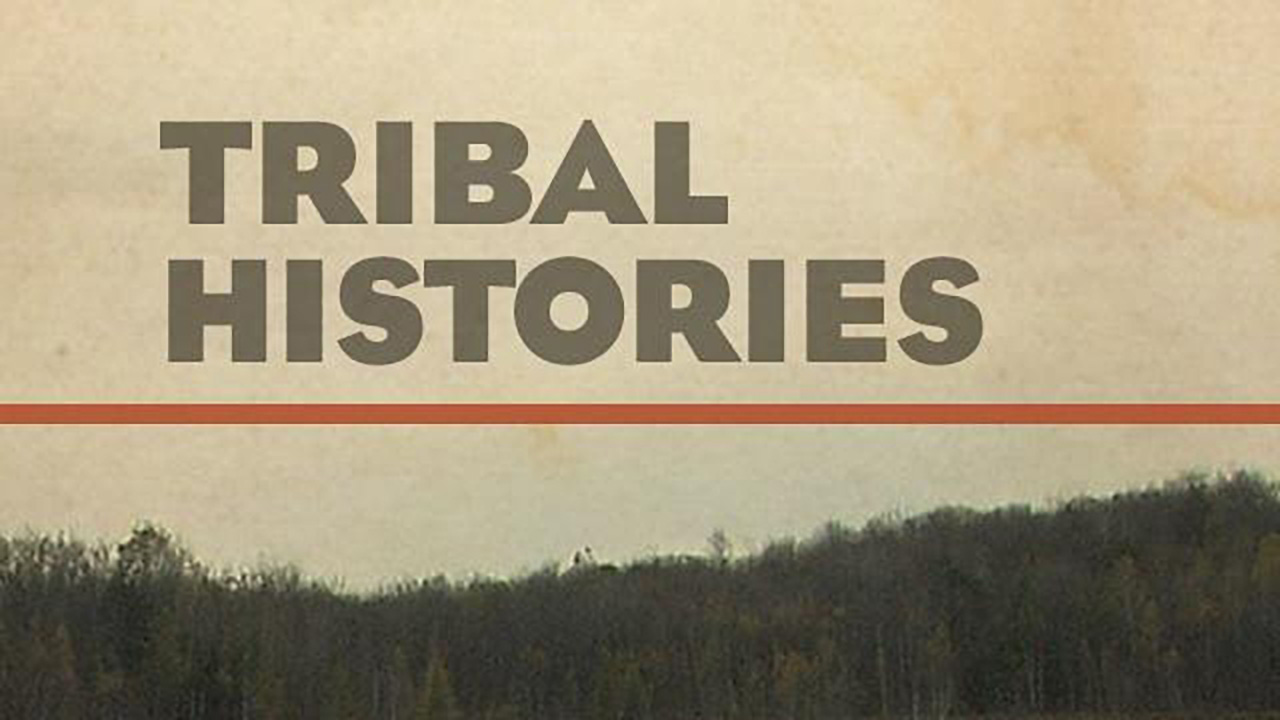
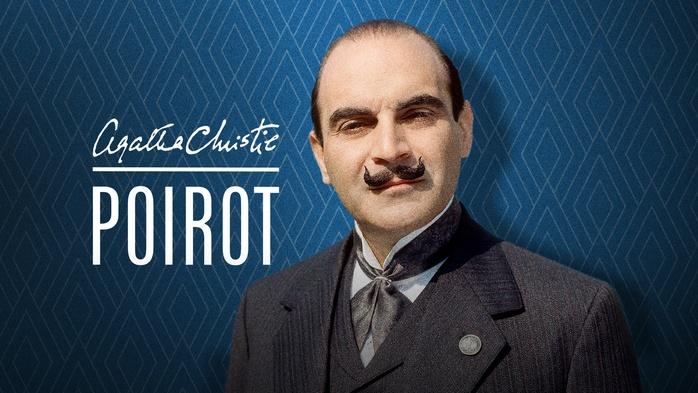


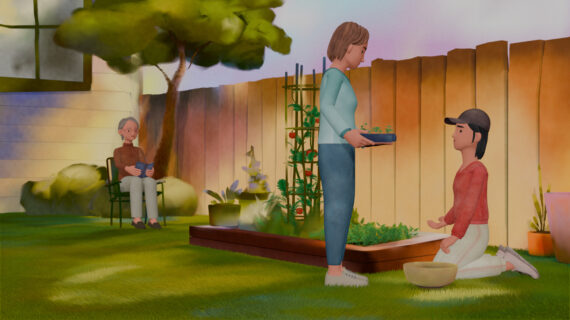
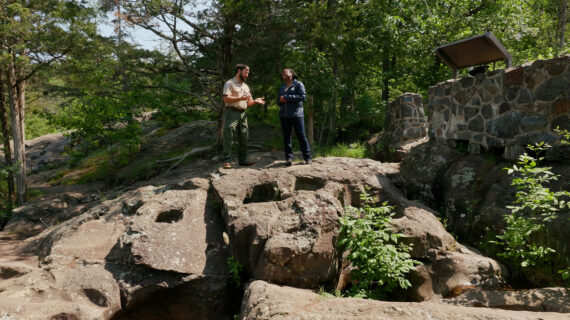
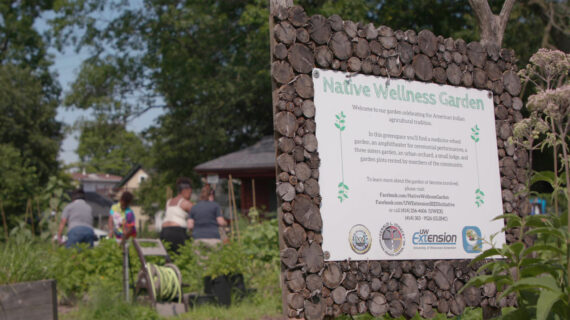


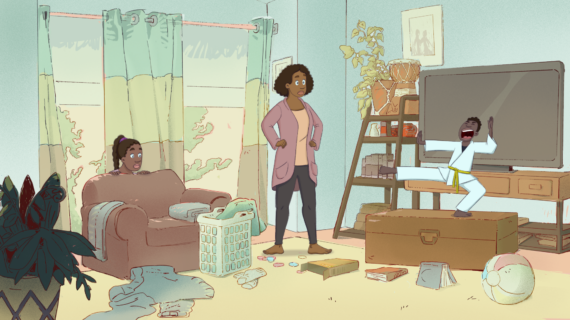
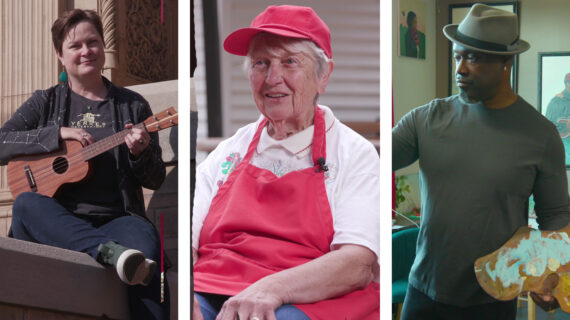
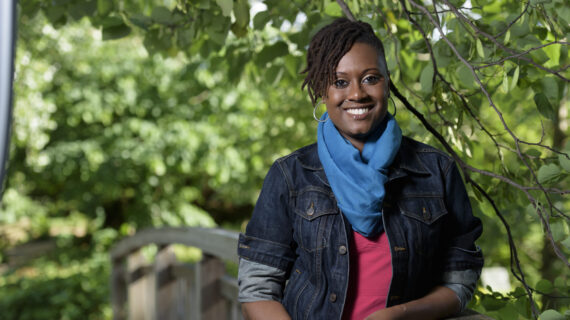
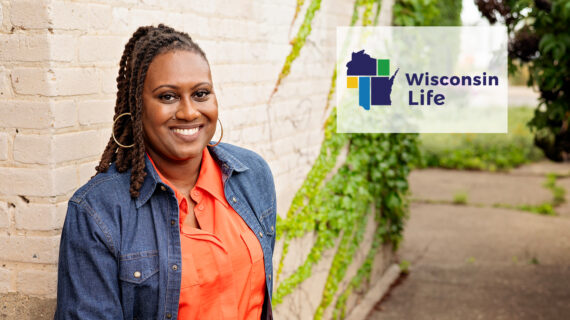
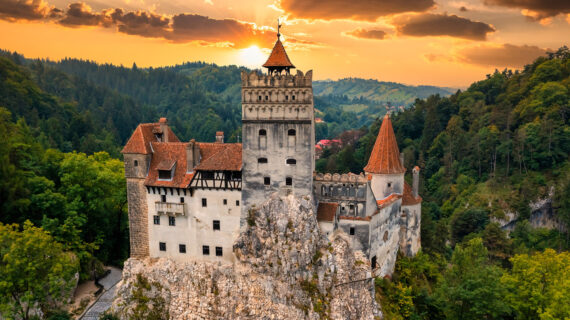
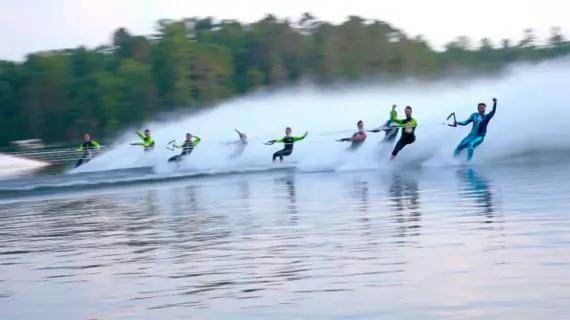

Follow Us